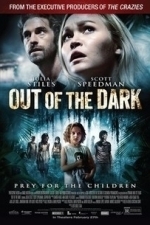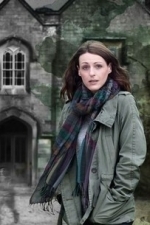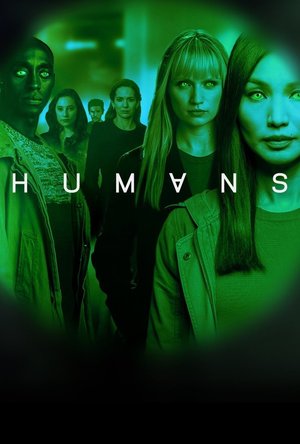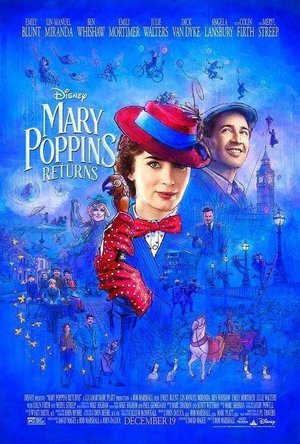Search
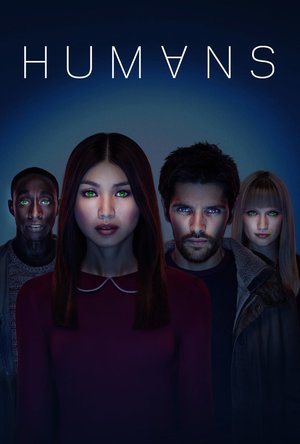
HUMANS - Season 3
TV Season Watch
One year after the dawn of consciousness, a decimated and oppressed Synth population fights to...
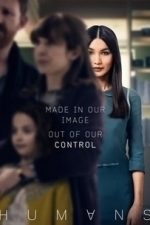
HUMANS - Season 1
TV Season Watch
In a parallel present where the latest must-have gadget for any busy family is a 'Synth' - a...
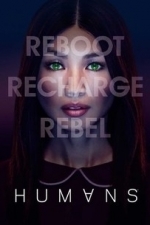
HUMANS - Season 2
TV Season Watch
Humans is a science fiction television series that debuted on 14 June 2015 on Channel 4. Written by...
Movie Metropolis (309 KP) rated Mary Poppins Returns (2018) in Movies
Jun 10, 2019
Disney knocks it out of the park
It was 1964 when the world was introduced to a practically-perfect British nanny in Walt Disney’s Mary Poppins. Back then, Julie Andrews starred as the eponymous character alongside Dick van Dyke and David Tomlinson. It was an instant hit and became one of Disney’s most-loved feature films.
That is, by everyone apart from the author of Mary Poppins, PL Travers. So incensed by what she felt was Disney’s misunderstanding of her source material, she banned all future work with the studio.
So, 54 years later and with Travers’ estate finally agreeing to a sequel (I wonder how much Disney executives had to pay for that), we get a sequel that no-one was really asking for. Mary Poppins Returns brings the titular character back into the hearts of newcomers and fans alike, but is the film as practically-perfect in every way like its lead? Or is it a bit of a dud?
Now an adult with three children, bank teller Michael Banks (Ben Whishaw) learns that his house will be repossessed in five days unless he can pay back a loan. His only hope is to find a missing certificate that shows proof of valuable shares that his father left him years earlier. Just as all seems lost, Michael and his sister Jane (Emily Mortimer) receive the surprise of a lifetime when Mary Poppins (Emily Blunt), the beloved nanny from their childhood, arrives to save the day and take the Banks family on a magical, fun-filled adventure.
Emily Blunt as Mary Poppins? You’re right to be sceptical. After all, how can an American actress bring to life a character so quintessentially British? Remarkably, she does it, with a cracking British accent to match. Blunt is, as she is in all her films, picture-perfect and oozing charisma. In fact, the entire cast is fabulous with the likes of Colin Firth and Meryl Streep joining the party as a sneaky bank manager and Mary Poppins’ cousin respectively. We’ve also got Julie Walters popping up every now and then as Ellen the housekeeper.
The new Banks children are absolutely wonderful. Pixie Davies, Nathanael Saleh and Joel Dawson show a range of emotions that would make seasoned actors blush, but here they thrive and look like they were having a blast. And that’s a trait clearly shared by the entire cast. Lin-Manuel Miranda’s plucky lamp-lighter, Jack, is obviously having the time of his life and this makes the whimsical nature of Mary Poppins Returns even more apparent.
In its hey-day, Mary Poppins was a technical revolution. Mixing live-action with colourful animation made the screen burst alive with imagination. Of course, special effects have moved on in the 50+ years that Mary has been away from our screens, but you’ll be pleased to know that each sequence feels just as magical.
From under the sea adventures to topsy-turvy houses, the ‘action’ scenes are beautifully filmed by director Rob Marshall. One scene in particular, involving hundreds of lamp-lighters is absolutely astounding and exquisitely choreographed.
The finale is typical sickly-sweet Disney, but in a movie populated by cartoon penguins, Irish dogs and the meaning of childhood, why shouldn’t it be?
The setting of Depression-era London lives and breathes before your very eyes. The CGI and practical effects used to create the capital in 1935 is astonishing, and testament to the teams behind the film. That £130million budget was clearly very well spent.
Then there are the songs. We all know the masterpieces from the original, but will there be any here that children will still be singing along to when they grow older? That’s debatable, but there are three or four that have the potential to be future classics. Look out for Trip the Light Fantastic, which makes up part of the film’s best scenes.
The finale is typical sickly-sweet Disney, but in a movie populated by cartoon penguins, Irish dogs and the meaning of childhood, why shouldn’t it be? The world is filled with such atrocities, it’s nice to sit back, relax with the family and enjoy a film that allows you to escape into your own imagination.
Any downsides? Well, while the pacing is nearly spot on, there’s no denying that Mary Poppins Returns is a long film by family film standards. At 130 minutes, it feels like this sequel is perhaps more for fans of the original than the children that the older film was clearly made for.
But these are small gripes in a sequel that pleasantly surprises on each and every turn. While lacking in the typical Disney poignancy, the film’s message is read loud and clear. There’s no doubt that Mary Poppins Returns is yet another hit for the studio and you’re sure to leave the cinema with a huge smile on your face. Mary is back and she means business.
https://moviemetropolis.net/2018/12/23/mary-poppins-returns-review-disney-knocks-it-out-of-the-park/
That is, by everyone apart from the author of Mary Poppins, PL Travers. So incensed by what she felt was Disney’s misunderstanding of her source material, she banned all future work with the studio.
So, 54 years later and with Travers’ estate finally agreeing to a sequel (I wonder how much Disney executives had to pay for that), we get a sequel that no-one was really asking for. Mary Poppins Returns brings the titular character back into the hearts of newcomers and fans alike, but is the film as practically-perfect in every way like its lead? Or is it a bit of a dud?
Now an adult with three children, bank teller Michael Banks (Ben Whishaw) learns that his house will be repossessed in five days unless he can pay back a loan. His only hope is to find a missing certificate that shows proof of valuable shares that his father left him years earlier. Just as all seems lost, Michael and his sister Jane (Emily Mortimer) receive the surprise of a lifetime when Mary Poppins (Emily Blunt), the beloved nanny from their childhood, arrives to save the day and take the Banks family on a magical, fun-filled adventure.
Emily Blunt as Mary Poppins? You’re right to be sceptical. After all, how can an American actress bring to life a character so quintessentially British? Remarkably, she does it, with a cracking British accent to match. Blunt is, as she is in all her films, picture-perfect and oozing charisma. In fact, the entire cast is fabulous with the likes of Colin Firth and Meryl Streep joining the party as a sneaky bank manager and Mary Poppins’ cousin respectively. We’ve also got Julie Walters popping up every now and then as Ellen the housekeeper.
The new Banks children are absolutely wonderful. Pixie Davies, Nathanael Saleh and Joel Dawson show a range of emotions that would make seasoned actors blush, but here they thrive and look like they were having a blast. And that’s a trait clearly shared by the entire cast. Lin-Manuel Miranda’s plucky lamp-lighter, Jack, is obviously having the time of his life and this makes the whimsical nature of Mary Poppins Returns even more apparent.
In its hey-day, Mary Poppins was a technical revolution. Mixing live-action with colourful animation made the screen burst alive with imagination. Of course, special effects have moved on in the 50+ years that Mary has been away from our screens, but you’ll be pleased to know that each sequence feels just as magical.
From under the sea adventures to topsy-turvy houses, the ‘action’ scenes are beautifully filmed by director Rob Marshall. One scene in particular, involving hundreds of lamp-lighters is absolutely astounding and exquisitely choreographed.
The finale is typical sickly-sweet Disney, but in a movie populated by cartoon penguins, Irish dogs and the meaning of childhood, why shouldn’t it be?
The setting of Depression-era London lives and breathes before your very eyes. The CGI and practical effects used to create the capital in 1935 is astonishing, and testament to the teams behind the film. That £130million budget was clearly very well spent.
Then there are the songs. We all know the masterpieces from the original, but will there be any here that children will still be singing along to when they grow older? That’s debatable, but there are three or four that have the potential to be future classics. Look out for Trip the Light Fantastic, which makes up part of the film’s best scenes.
The finale is typical sickly-sweet Disney, but in a movie populated by cartoon penguins, Irish dogs and the meaning of childhood, why shouldn’t it be? The world is filled with such atrocities, it’s nice to sit back, relax with the family and enjoy a film that allows you to escape into your own imagination.
Any downsides? Well, while the pacing is nearly spot on, there’s no denying that Mary Poppins Returns is a long film by family film standards. At 130 minutes, it feels like this sequel is perhaps more for fans of the original than the children that the older film was clearly made for.
But these are small gripes in a sequel that pleasantly surprises on each and every turn. While lacking in the typical Disney poignancy, the film’s message is read loud and clear. There’s no doubt that Mary Poppins Returns is yet another hit for the studio and you’re sure to leave the cinema with a huge smile on your face. Mary is back and she means business.
https://moviemetropolis.net/2018/12/23/mary-poppins-returns-review-disney-knocks-it-out-of-the-park/
Bob Mann (459 KP) rated Mary Poppins Returns (2018) in Movies
Sep 28, 2021
A valiant attempt to recreate a masterpiece.
How do you repaint a masterpiece: the Mona Lisa of children’s fantasy cinema? Some would say “You shouldn’t try”.
As I’ve said before, Mary Poppins was the first film I saw when it came out (or soon afterwards) at a very impressionable age…. I was said to have bawled my eyes out with “THE MAGIC NANNY IS GOING AWAY!!” as Julie Andrews floated off! So as my last cinema trip of 2018 I went to see this sequel, 54 years after the original, with a sense of dread. I’m relieved to say that although the film has its flaws it’s by no means the disaster I envisaged.
The plot
It’s a fairly lightweight story. Now all grown up, young Michael from the original film (Ben Whishaw) has his own family. His troubles though come not singly but in battalions since not only is he grieving a recent loss but he is also about to be evicted from 17 Cherry Tree Lane. Help is at hand in that his father, George Banks, had shares with the Fidelity Fiduciary Bank. But despite their best efforts neither he, his sister Jane (Emily Mortimer) nor their chirpy “strike a light” lamplighter friend Jack (Lin-Manuel Miranda) can find the all-important share certificates. With the deadline from bank manager Wilkins (Colin Firth) approaching, it’s fortuitous that Mary Poppins (Emily Blunt) drops in to look after the Banks children – John (Nathanael Saleh), Anabel (Pixie Davies) and Georgie (Joel Dawson) – in her own inimitable fashion.
Songs that are more Meh-ry Poppins
I know musical taste is very personal. My biggest problem with the film though was that the songs by Marc Shaiman were, to me, on the lacklustre side. Only one jumped out and struck me: the jaunty vaudeville number “A Cover is not the Book”. Elsewhere they were – to me – unmemorable and nowhere near as catchy as those of “The Greatest Showman“. (What amplified this for me was having some of the classic Sherman-brothers themes woven into the soundtrack that just made me realise what I was missing!) Richard M Sherman – now 90 – was credited with “Music Consultant” but I wonder how much input he actually had?
The other flaws
Another issue I had with the film was that it just tried WAAYYY too hard to tick off the key attributes of the original:
‘Mary in the mirror’ – check
‘Bottomless carpet bag’ – check
‘Initial fun in the nursery’ – check
‘Quirky trip to a cartoon land’ – check
‘Dance on the ceiling with a quirky relative’ – check
‘Chirpy chimney sweeps’ – check (“Er… Mr Marshall… we couldn’t get chimney sweeps… will lamplighters do?” “Yeah, good enough”)
Another thing that struck me about the film – particularly as a film aimed at kids – is just how long it is. At 2 hours and 10 minutes it’s a bladder-testing experience for adults let alone younger children. (It’s worth noting that this is still 9 minutes shorter than the original, but back in the 60’s we had FAR fewer options to be stimulated by entertainment and our attention spans were – I think – much longer as a result!)
What it does get right
But with this whinging aside, the film does get a number of things spit-spot on.
Emily Blunt is near perfection as Poppins. (In the interests of balance my wife found her bizarrely clipped accent very grating, but I suspect P.L. Travers would have approved!). Broadway star Lin-Manuel Miranda also does a good job as Jack, although you wonder whether the ‘society of cockney actors’ must again be in a big grump about the casting! I found Emily Mortimer just delightful as the grown-up Jane, although Ben Whishaw‘s Michael didn’t particularly connect with me.
Almost unrecognisable was David Warner as the now wheelchair-bound Admiral Boom. His first mate is none other than Jim Norton of “Father Ted” Bishop Brennan fame (thanks to my daughter Jenn for pointing that one out)!
Also watch out (I’d largely missed it before I realised!) for a nice pavement cameo by Karen Dotrice, the original Jane, asking directions to number 19 Cherry Tree Lane.
What the film also gets right is to implement the old-school animation of the “Jolly Holidays” segment of the original. That’s a really smart move. Filmed at Shepperton Studios in London, this is once again a great advert for Britain’s film technicians. The London sets and the costumes (by the great Sandy Powell) are just superb.
Some cameo cherries on the cake
Finally, the aces in the hole are the two cameos near the end of the film. And they would have been lovely surprises as well since neither name appears in the opening credits. It’s therefore a CRYING SHAME that they chose to let the cat out of the bag in the trailer (BLOODY MARKETING EXECS!). In case you haven’t seen the trailer, I won’t spoil it for you here. But as a magical movie experience the first of those cameos moved me close to tears. He also delivers a hum-dinger of a plot twist that is a genuinely welcome crossover from the first film.
Final Thoughts
Rob Marshall directs, and with a pretty impossible task he delivers an end-product that, while it didn’t completely thrill me, did well not to trash my delicate hopes and dreams either. Having just listened to Kermode and Mayo’s review (and it seems that Mark Kermode places Poppins on a similar pedestal to me) the songs (and therefore the “Place Where Lost Things Go” song) just didn’t resonate with me in the same way, and so, unlike Kermode, I mentally never bridged the gap to safely enjoying it.
But what we all think is secondary. Because if some three or four year old out there gets a similarly lifelong love of the cinema by watching this, then that’s all that matters.
As I’ve said before, Mary Poppins was the first film I saw when it came out (or soon afterwards) at a very impressionable age…. I was said to have bawled my eyes out with “THE MAGIC NANNY IS GOING AWAY!!” as Julie Andrews floated off! So as my last cinema trip of 2018 I went to see this sequel, 54 years after the original, with a sense of dread. I’m relieved to say that although the film has its flaws it’s by no means the disaster I envisaged.
The plot
It’s a fairly lightweight story. Now all grown up, young Michael from the original film (Ben Whishaw) has his own family. His troubles though come not singly but in battalions since not only is he grieving a recent loss but he is also about to be evicted from 17 Cherry Tree Lane. Help is at hand in that his father, George Banks, had shares with the Fidelity Fiduciary Bank. But despite their best efforts neither he, his sister Jane (Emily Mortimer) nor their chirpy “strike a light” lamplighter friend Jack (Lin-Manuel Miranda) can find the all-important share certificates. With the deadline from bank manager Wilkins (Colin Firth) approaching, it’s fortuitous that Mary Poppins (Emily Blunt) drops in to look after the Banks children – John (Nathanael Saleh), Anabel (Pixie Davies) and Georgie (Joel Dawson) – in her own inimitable fashion.
Songs that are more Meh-ry Poppins
I know musical taste is very personal. My biggest problem with the film though was that the songs by Marc Shaiman were, to me, on the lacklustre side. Only one jumped out and struck me: the jaunty vaudeville number “A Cover is not the Book”. Elsewhere they were – to me – unmemorable and nowhere near as catchy as those of “The Greatest Showman“. (What amplified this for me was having some of the classic Sherman-brothers themes woven into the soundtrack that just made me realise what I was missing!) Richard M Sherman – now 90 – was credited with “Music Consultant” but I wonder how much input he actually had?
The other flaws
Another issue I had with the film was that it just tried WAAYYY too hard to tick off the key attributes of the original:
‘Mary in the mirror’ – check
‘Bottomless carpet bag’ – check
‘Initial fun in the nursery’ – check
‘Quirky trip to a cartoon land’ – check
‘Dance on the ceiling with a quirky relative’ – check
‘Chirpy chimney sweeps’ – check (“Er… Mr Marshall… we couldn’t get chimney sweeps… will lamplighters do?” “Yeah, good enough”)
Another thing that struck me about the film – particularly as a film aimed at kids – is just how long it is. At 2 hours and 10 minutes it’s a bladder-testing experience for adults let alone younger children. (It’s worth noting that this is still 9 minutes shorter than the original, but back in the 60’s we had FAR fewer options to be stimulated by entertainment and our attention spans were – I think – much longer as a result!)
What it does get right
But with this whinging aside, the film does get a number of things spit-spot on.
Emily Blunt is near perfection as Poppins. (In the interests of balance my wife found her bizarrely clipped accent very grating, but I suspect P.L. Travers would have approved!). Broadway star Lin-Manuel Miranda also does a good job as Jack, although you wonder whether the ‘society of cockney actors’ must again be in a big grump about the casting! I found Emily Mortimer just delightful as the grown-up Jane, although Ben Whishaw‘s Michael didn’t particularly connect with me.
Almost unrecognisable was David Warner as the now wheelchair-bound Admiral Boom. His first mate is none other than Jim Norton of “Father Ted” Bishop Brennan fame (thanks to my daughter Jenn for pointing that one out)!
Also watch out (I’d largely missed it before I realised!) for a nice pavement cameo by Karen Dotrice, the original Jane, asking directions to number 19 Cherry Tree Lane.
What the film also gets right is to implement the old-school animation of the “Jolly Holidays” segment of the original. That’s a really smart move. Filmed at Shepperton Studios in London, this is once again a great advert for Britain’s film technicians. The London sets and the costumes (by the great Sandy Powell) are just superb.
Some cameo cherries on the cake
Finally, the aces in the hole are the two cameos near the end of the film. And they would have been lovely surprises as well since neither name appears in the opening credits. It’s therefore a CRYING SHAME that they chose to let the cat out of the bag in the trailer (BLOODY MARKETING EXECS!). In case you haven’t seen the trailer, I won’t spoil it for you here. But as a magical movie experience the first of those cameos moved me close to tears. He also delivers a hum-dinger of a plot twist that is a genuinely welcome crossover from the first film.
Final Thoughts
Rob Marshall directs, and with a pretty impossible task he delivers an end-product that, while it didn’t completely thrill me, did well not to trash my delicate hopes and dreams either. Having just listened to Kermode and Mayo’s review (and it seems that Mark Kermode places Poppins on a similar pedestal to me) the songs (and therefore the “Place Where Lost Things Go” song) just didn’t resonate with me in the same way, and so, unlike Kermode, I mentally never bridged the gap to safely enjoying it.
But what we all think is secondary. Because if some three or four year old out there gets a similarly lifelong love of the cinema by watching this, then that’s all that matters.
